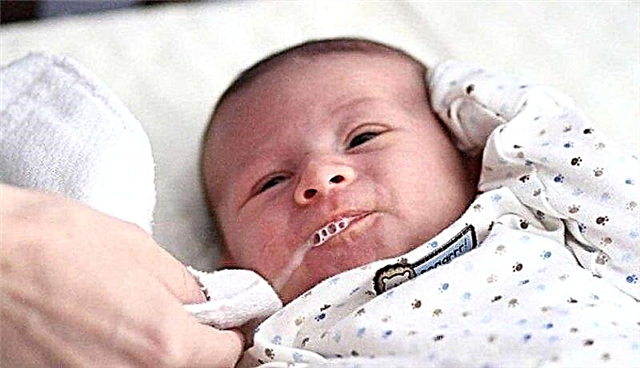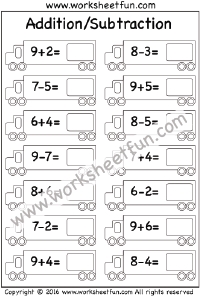Most babies tend to lose their first set of teeth in a specific sequence and over time. They may even have perfect teeth that don't need more than a regular brushing and check-up every six months. However, some children may need tooth extraction. It happens when the extraction of a milk tooth is necessary and may even be beneficial for its overall health and development. Read on and find out how to properly remove a baby tooth from a child without tears at home and at the dentist.
Role of milk teeth
Humans are born with two sets of teeth, and all of the primary teeth are eventually replaced with permanent teeth. Because of this, baby teeth play an important role in maintaining molar space as your baby grows. Primary teeth are also important for general growth, speech development and nutrition. Therefore, it is important to keep your baby's teeth healthy and allow them to stay in the mouth for as long as possible until they are ready to naturally fall out.
How do milk teeth fall out?

When a child loses their first tooth, there is reason to celebrate! But sometimes the teeth don't come out as easily as we would like. Extraction of children's teeth is an unusual situation for parents who are wondering if it could harm their child.
Some parents are afraid that their child might swallow a tooth if they lose it while eating, and some children are very impatient with tooth loss. But many crumbs are afraid of tooth extraction precisely because of the fear of pain. The good news is that if the tooth is really ready to come out, it can be pulled out completely painlessly.
In children, milk teeth usually begin to fall at about 6 years old, and this begins with the incisors. When the large molars begin to grow, the roots of the deciduous teeth dissolve, leaving them without any retention other than a small amount of connective tissue. As this process takes place, baby teeth loosen more and more.
A child's teeth often fall out involuntarily when he simply plays with them, pressing his tongue against a loose tooth or swinging it back and forth with his fingers. Often, the tooth simply falls out without pain, turning into a pleasant surprise for the child.
Of course, it's always best to have baby teeth fall out on their own. If your child shows you a loose tooth, ask him to regularly loosen his tongue to loosen it even more. Most kids are more than happy to do this.
How to remove a loose milk tooth at home?

If it seems like it won't happen on its own, you can help the process.
Start by applying a small amount of anesthetic to the area around the tooth and let it work for a few minutes. Using a cloth or soft tissue, squeeze the tooth and move it back and forth. If you feel a lot of resistance, the child is not yet ready for loss.
But if the tooth behaves like it is hanging by a thread from fabric, you can simply pull it with a quick twist or tug.
You may see bleeding where the tooth was anchored. Using a clean gauze pad, you should apply pressure to this area. Distract your child from the blood by congratulating him on the loss of a tooth, let him see the tooth.
Reasons for removing milk teeth in the dentist's office
Often, extraction of milk teeth in the early years of a child may be a necessary dental procedure.
Shark teeth in a child
This is a condition where molars appear behind a baby's milk teeth before they begin to wobble. This creates the illusion of two rows of teeth, like a shark's mouth. At about six years old, this can happen with baby teeth, and later, at about 11 years old, a similar situation can happen with molars.
This usually happens when the root of the deciduous tooth is not malleable to dissolve. The permanent tooth will follow the path of least resistance and start growing behind. As a rule, the baby tooth will dissolve anyway, only more slowly.
If the deciduous tooth remains for more than three months after the complete eruption of the molar, a visit to the dentist is warranted. The specialist will assess any problems and decide whether to remove the baby tooth or any other adjacent baby teeth that may interfere with the growth of permanent molars.
Supernumerary tooth

These are extra teeth or pieces of teeth that grow between or behind teeth. They can restrict normal teething, resulting in crowding or compression of the dentition.
Sometimes they can be caught early by taking an X-ray, but other times they erupt next to or behind other teeth. Most dentists remove them as soon as they are found to allow the surrounding teeth to snap into place more easily or to initiate orthodontic treatment if necessary.
Damage
It is easy for children to get hurt. Falls, accidents, and sporting mishaps often result in damage to the teeth or mouth. If a baby tooth cannot be saved, the dentist often chooses to remove it. It can also help the molar emerge faster and also prevent the spread of decay from the damaged tooth.
Tips for parents during a dental visit and after a child's tooth extraction
- The first thing to recommend is to stay calm. The child reads your emotions and reactions well and will respond accordingly. Talk to your child and answer any questions they have. Be honest with him about what to expect, but you should reassure your child of the best outcome of the process.
- Once the tooth is removed, the child will need to remain in the office until the bleeding slows down or stops. Post-procedural instructions will be given regarding food and drink restrictions, directions for care of the injured gum, and activity restrictions until full recovery occurs.
- Follow-up visits will be required depending on the healing of the wound. Infection or excessive pain is a reason to visit the dentist again.
Strategic guidelines for managing loose milk teeth
Summing up all of the above, the following points can be highlighted.
- Let the child loosen and pull out the tooth himself.
While it can be very tempting to pull out a baby tooth, it is best if you let your child do it on their own. So he will be able to assess how painful it is to pull the tooth, and can tell how much it lends itself to pulling out. A child who pulls his own tooth will be able to do it more painlessly than you.
- If you are concerned, see your dentist.
If you have any concerns about how your teeth are falling out or are worried about how molars are coming out, see your dentist to make sure there are no problems.
- Use a gauze pad to stop bleeding.
Sometimes complications can develop when pulling out children's teeth.
As a rule, the only unpleasant consequence is a little bleeding. Use a gauze pad and press down on the lost tooth to stop bleeding faster.
- Visit your dentist if tooth fragments remain.
You may find that tooth fragments remain after the extraction. In this case, it is recommended to visit a dentist.

Do not try to remove these debris yourself, as they can be embedded in the gum and cause severe pain for the child when trying to remove it.
- Watch your mouth.
Continue to monitor the empty space after the tooth has fallen out. If after a day or two you find redness or the child complains of pain, you need to visit the dentist to make sure that the child is not bad at all.
Conclusion
Baby teeth play an important role in your baby's growth and development, and you should do your best to keep them clean and healthy until they are ready to naturally fall out. If a baby's milk teeth become unhealthy, painful, or act as a barrier to the proper growth of molars, they may need to be removed early.
Understanding these situations will help you make the right decisions for your baby's health and prepare to help your baby overcome the discomfort associated with tooth extraction.



